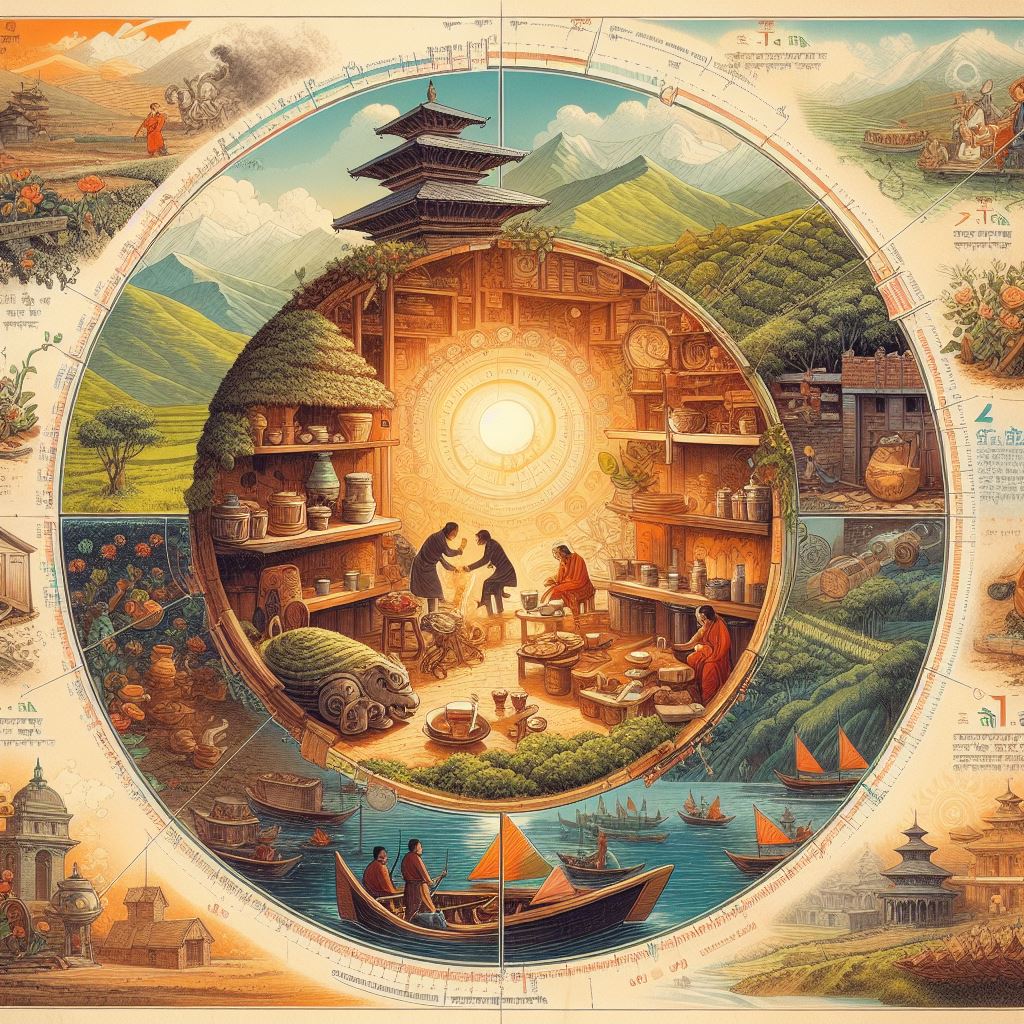The Ancient Roots: China’s gift to the world
Tea, that comforting elixir, traces its origins back to ancient China. Legend has it that Emperor Shen Nong accidentally discovered tea when tea leaves blew into a pot of boiling water he was preparing. The aromatic infusion captivated him, and thus began the saga of tea.
Did you know?
- The Chinese character for tea (茶) is pronounced “chá” in Mandarin, which influenced the word “tea” in various languages worldwide.

The silk road and tea’s global odyssey
As trade routes expanded, so did tea. The Silk Road played a pivotal role in spreading tea beyond China’s borders. Traders carried tea across Asia, introducing it to neighboring regions. India, with its fertile soil and favorable climate, soon became a significant player in tea cultivation.
Did you know?
- Buddhist monks were instrumental in disseminating tea knowledge along the Silk Road, sharing its virtues with distant lands.
India’s tea revolution and the Nepali connection
The British East India Company, recognizing India’s potential, established tea plantations in Assam during the early 19th century. Assam tea, with its robust flavor, gained popularity worldwide. But what about Nepal?
Nepal’s tea awakening
Nepal, nestled in the Himalayas, shares a border with Darjeeling (India), renowned for its exquisite tea. The seeds of tea plants from Darjeeling found their way to Nepal’s fertile hills. It is said that teas in Nepal were grown using seeds which were a gift by the chinese emperor to Nepali prime Minister Jung Bahadur Rana. The first tea estate, Ilam Tea estate, sprouted in 1863, marking Nepal’s entry into the tea industry. The biggest export of Nepali teas is to India. The national tea and coffee development board was found in year 1993.
Did you know?
- Ilam Tea Garden’s lush slopes produce teas reminiscent of Darjeeling’s delicate muscatel notes.
The cultivars and the bond between India and Nepal
Nepal’s tea cultivars—Camellia sinensis var. sinensis and Camellia sinensis var. assamica—echo their Indian counterparts. The high-altitude gardens, cool climate, and misty mornings create ideal conditions for delicate teas. Similarity in the ecology shapes the characters of these tea bushes to be comparable. The shared heritage between Indian and Nepal tea is palpable.
Did you know?
- The Himalayan foothills offer a unique microclimate that imparts distinct flavors to Nepali teas.
The Himalayan brew: Nepali tea’s unique flavor
Nepali teas—whether orthodox or specialty—carry the essence of the mountains. From floral notes to muscatel richness, each cup tells a story. The terroir, elevation, and skilled plucking contribute to this uniqueness.
Frequently asked questions about Nepali Tea
- Q: Is tea really from China?
- A: While it is a mystery where exactly tea originated from, due to historical evidences majority of population believes that it comes from China.
- Q: How did tea reach India?
- A: The Silk Road and adventurous traders paved the way.
- Q: Why is Darjeeling tea famous?
- A: Darjeeling’s high-altitude gardens produce exquisite teas.
- Q: What’s the difference between Nepali and Indian tea?
- A: Both share cultivars, but Nepal’s unique terroir imparts distinct flavors, mostly because of difference in microclimate and production practices.
- Q: How did Nepal’s tea industry begin?
- A: Illam Tea Garden kickstarted Nepal’s tea journey.
- Q: What’s the secret behind Himalayan teas?
- A: Altitude, climate, and skilled craftsmanship create magic.
- Q: Are Nepali teas organic?
- A: Many are! Artisans behind Nepal Hills Tea embraces organic practices.
- Q: Can I visit Nepali tea gardens?
- A: Absolutely! Explore the misty slopes and sip fresh brews. Please connect with us if you would like to visit our farms and factory.
- Q: What’s the best time to harvest tea leaves?
- A: Spring and early summer yield the finest leaves.
Authored By:
Bhaskar Dahal
2nd Generation Tea Entrepreneur
Founder and C.E.O, Nepal Hills Tea Inc.




